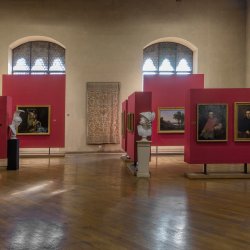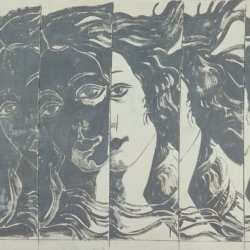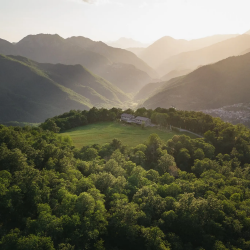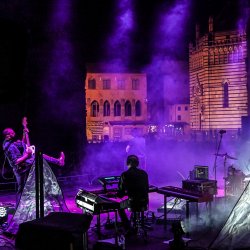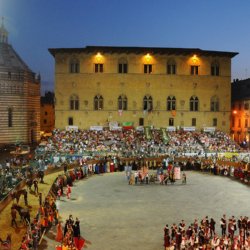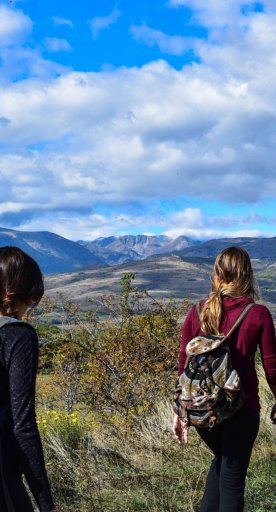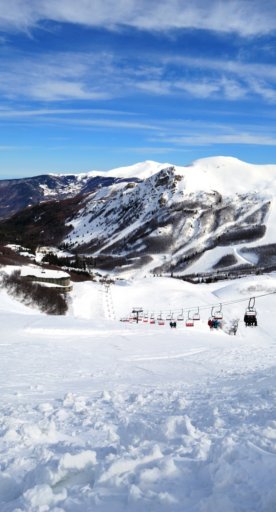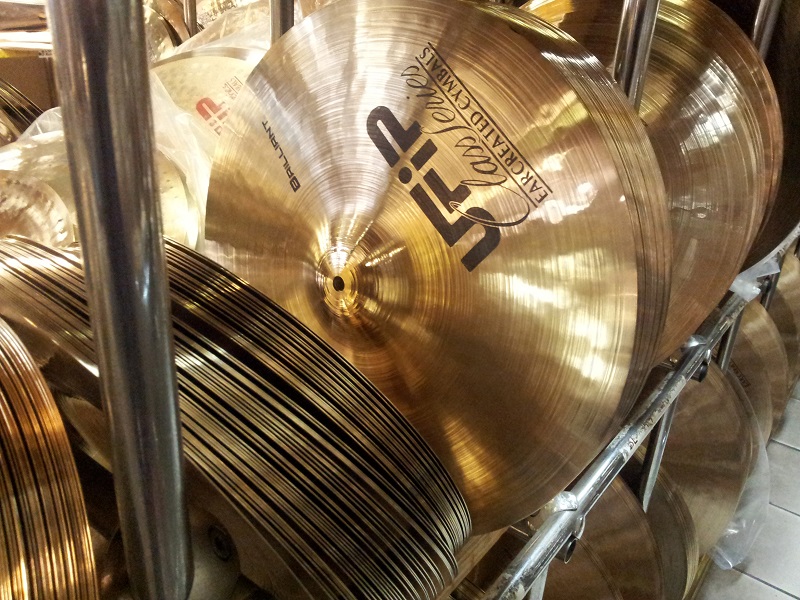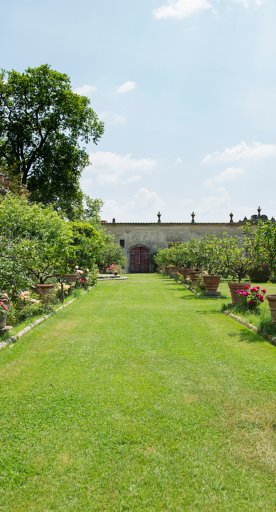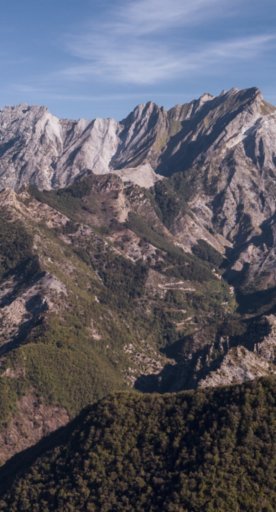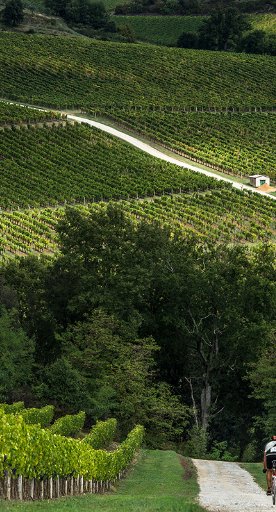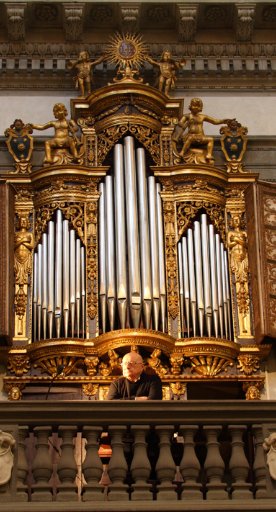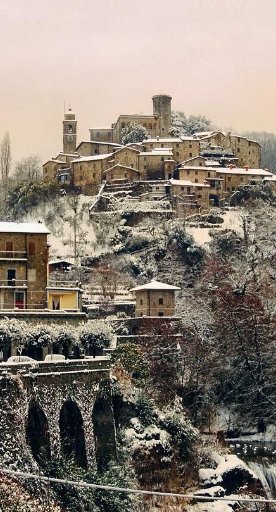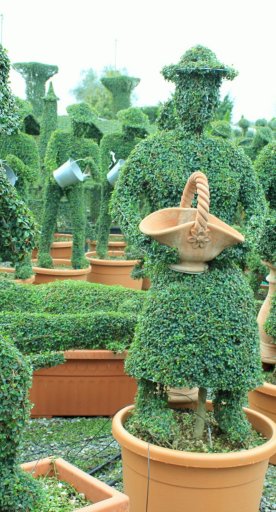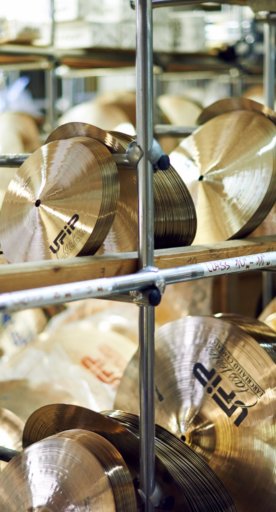Graffiti and contemporary art along the Romea Strata
The Romea Strata is an ancient path that winds through the villages and nature of the Tuscan-Emilian Apennines. Where hiking signs were born, history and street art now coexist.
The peaks and slopes of the Apennines have always been natural guardians of Tuscany's borders, where vast forest-covered views stretch out. These mountain territories, the northernmost in the region, are crossed by a thick network of trails, as well as great paths traveled since antiquity, where history and modernity come together.
An example of this is the Via Romea Strata, an important route that connects Italy with the territories of northeastern Europe, and that in Tuscany runs for about 110 kilometers divided into six stages, the last of which overlaps with the Via Francigena. Along this ancient path it is possible to come across works of contemporary art that intertwine with the mountain environment, and to explore the place where, in the last century, the red and white hiking signs that are now found throughout the peninsula were created.
-
1.The Rules of Maresca, the origin of hiking signage
-
2.Graffiti and contemporary art among the nature of the Apennines
The Rules of Maresca, the origin of hiking signage
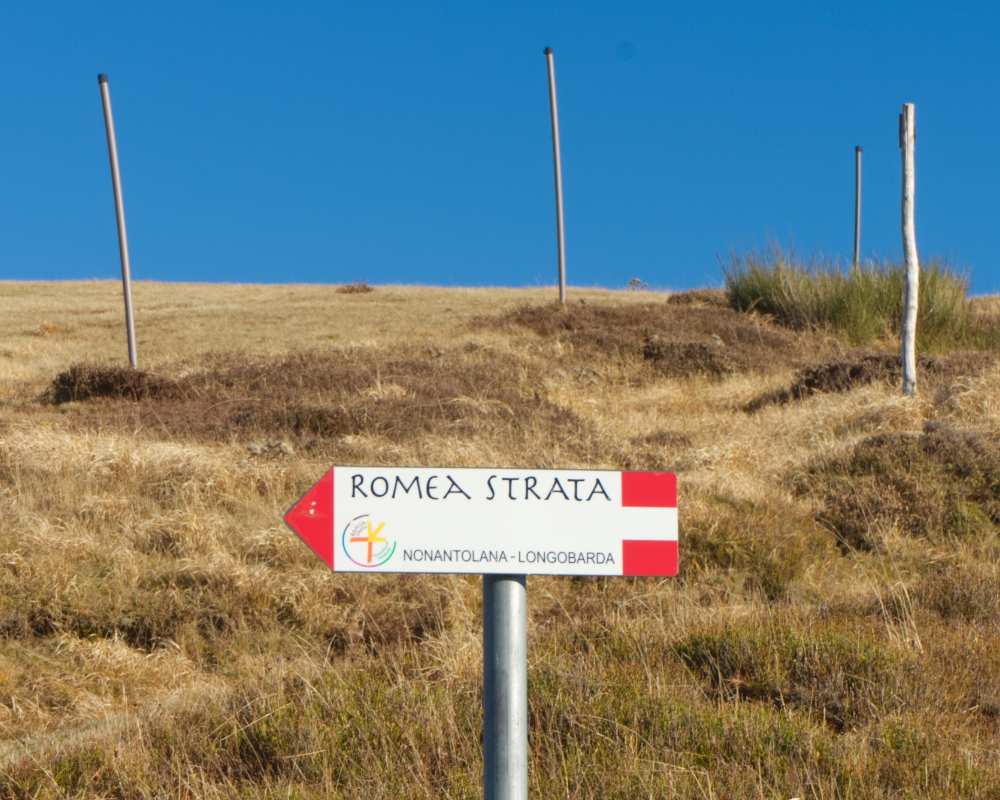
Along the second stage of the Via Romea Strata in Tuscany, before descending toward Pistoia, we encounter Maresca, not far from San Marcello Piteglio. Nestled among the forests of the Pistoia Mountains, this small hamlet owes its importance to a historical fact that marked a turning point in the classification of hiking trails.
In 1950 a conference open to the CAI sections of the border lands between Tuscany and Emilia-Romagna was convened with the aim of standardizing trail signage in the Apennines. The meeting was held in May of that year, and saw the birth of a new type of signage, characterized by white and red stripes, which were combined with black numbers.
The new classification system immediately gained wide acceptance, and soon spread throughout the country, going down in history as the "Rules of Maresca”.
Graffiti and contemporary art among the nature of the Apennines
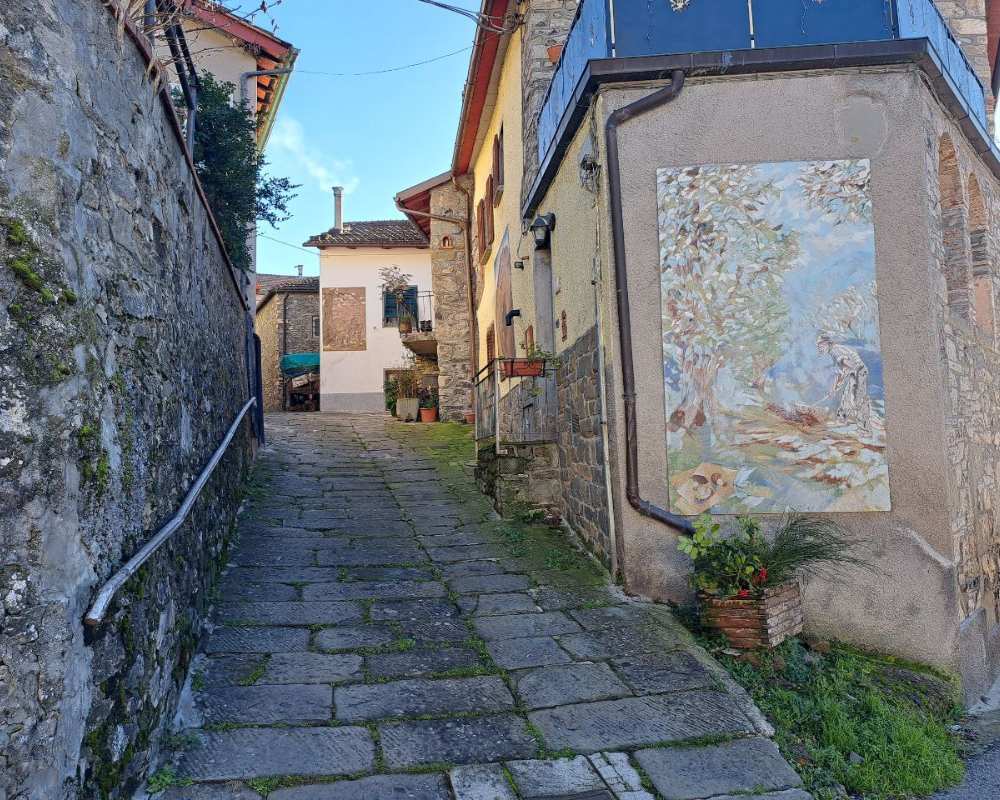
The nature and history that characterize the first stages of the Romea Strata in Tuscany have inspired numerous artists, who have scattered their traces in the form of murals, site-specific installations, and works of land art.
Traveling the itinerary from north to south and entering the territories of the Pistoia Mountains, you come across works of art that show a close link with the environment, tell the history of the places, and hand down the identity of the territory. Such is the case in Lizzano, the village of murals, whose streets hold graffiti created in the aftermath of World War II: some of these works recall the period when U.S. soldiers took refuge in the village, befriending the locals. Over time, however, new ones have been added to the memorial murals: as you walk through the small town of Lizzano, you can observe scenes depicting mountain life, the village's ancient crafts, nature and the animals that thrive on the foothills of the Apennines.
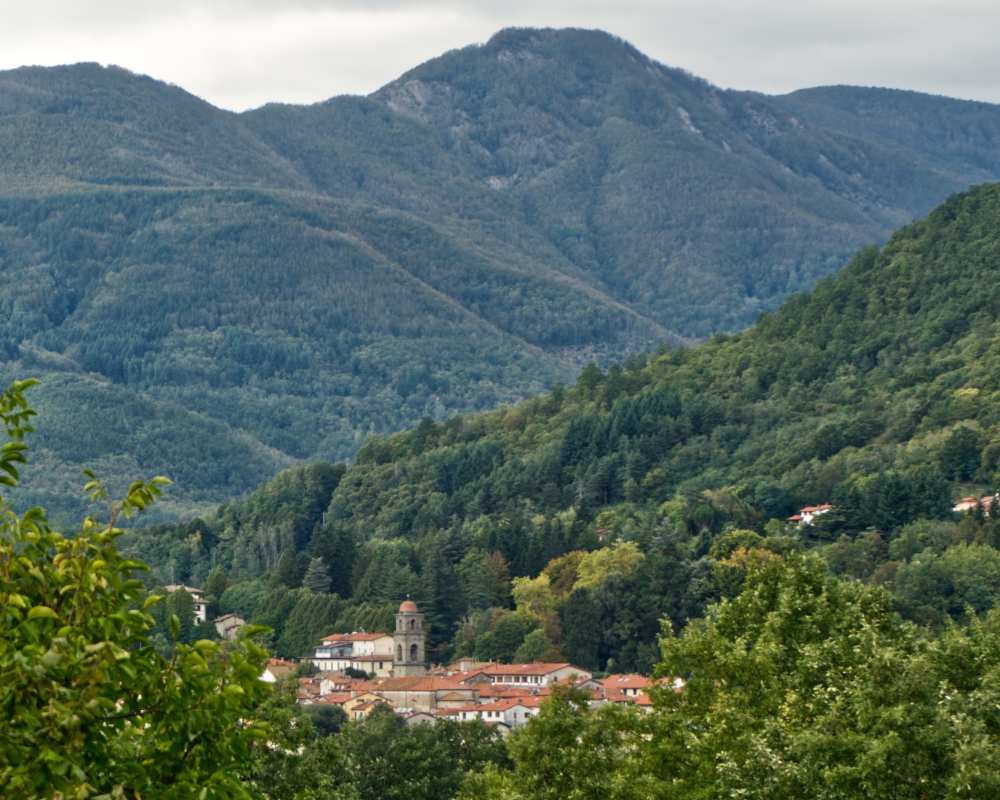
San Marcello Pistoiese and neighboring towns also hold interesting works of mural art. In the village, for example, you can admire the graffito Fabula, by Gio Pistone, in which every element reminds of the mountain environment and local stories. La Lima (San Marcello Piteglio) holds a work by Argentine artist Francisco Bosoletti, who on the walls of an old building created Tutto scorre, inspired by the area's ancient bridges. The work recalls the passage of time, and hides a peculiarity: in fact, it can be observed either positively (as it presents itself to the eye), or negatively. The latter effect can be achieved by taking a photo and then reversing the colors: the bright portions of the mural will become dark, and vice versa, but the subject will continue to be perfectly recognizable.
Marina Arienzale's site-specific installation requires, in order to be reached, a detour from the Romea Strata route, in the direction of the Ferriere suspension bridge. Below this, halfway between the two ends, the work Nadir goes almost unnoticed in daylight: few sculptures placed on the ground, resembling rocks, reveal their beauty at night, when they light up like a constellation under the moon rays, mirroring the starry sky that comes to life in the darkness of the night. A photoluminescent paint, which captures sunlight and reflects it from twilight, was used to create this striking work.
The hamlet of Maresca itself has also been affected by contemporary art projects: here you can see Triton, the mural by Andrea Casciu that recounts the origins of the place, intimately linked to water and fire, elements fundamental to the functioning of the old local ironworks.
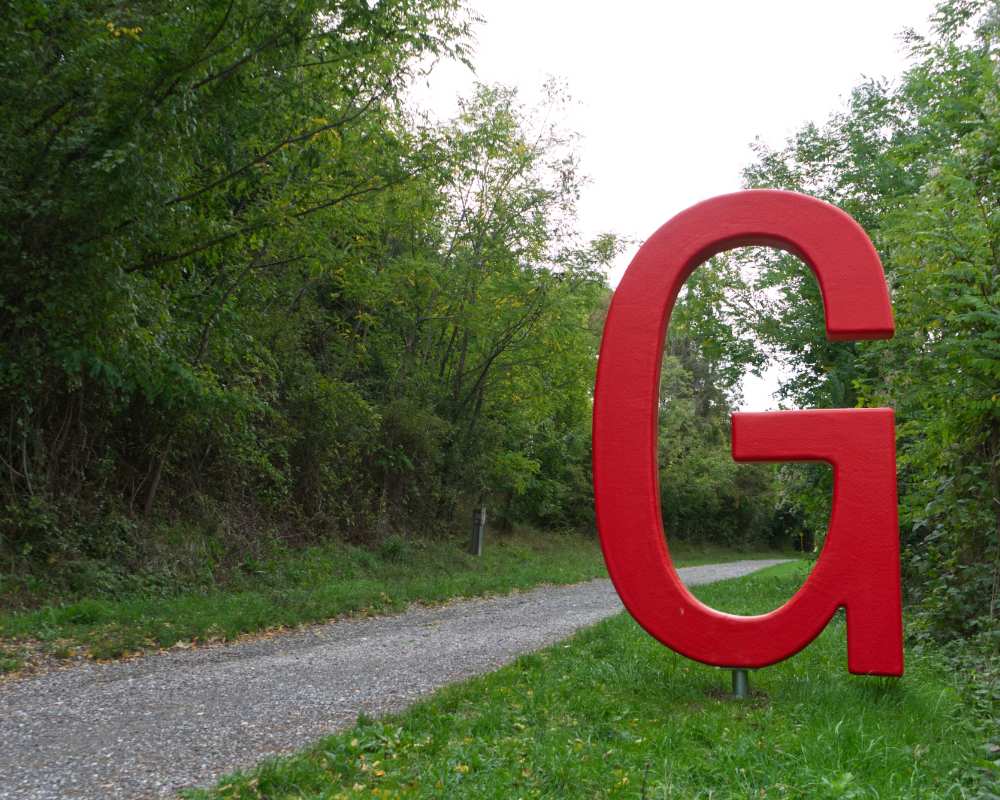
The entire area of the Pistoia Mountains along the Romea Strata has been the subject of artistic initiatives that have resulted in permanent or temporary works. Prominent among the latter is the Segnavie project, which has scattered land art installations throughout the area with the aim of celebrating the anniversary of the Rules of Maresca.

